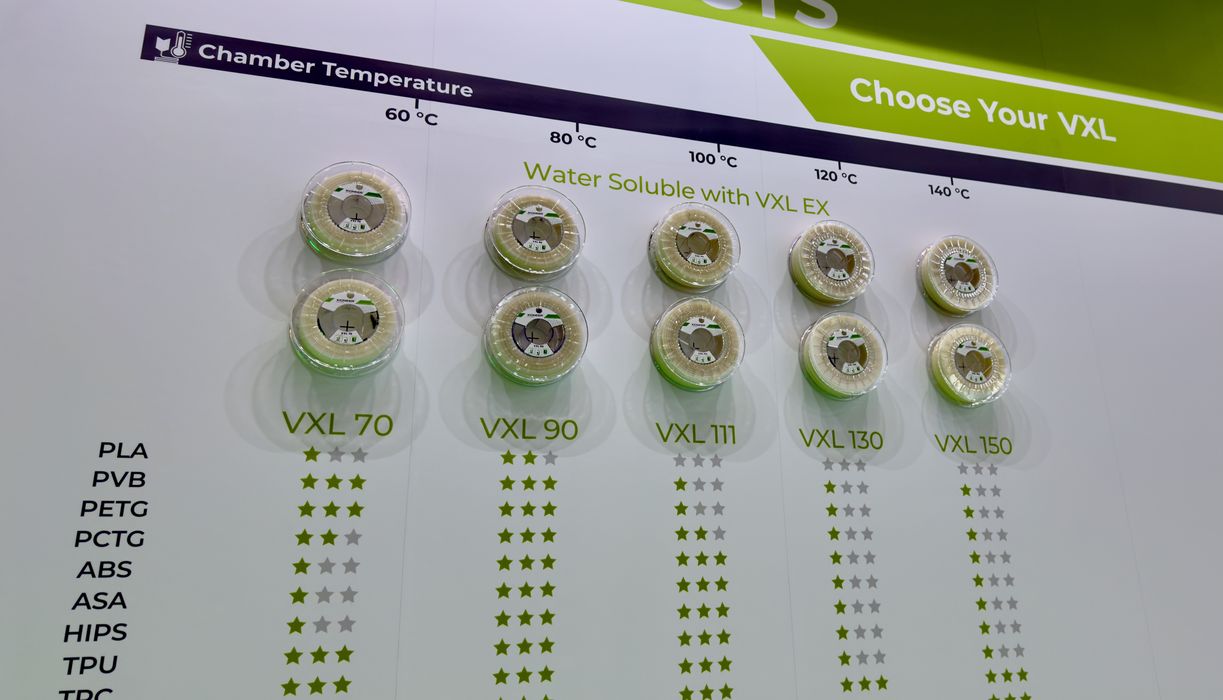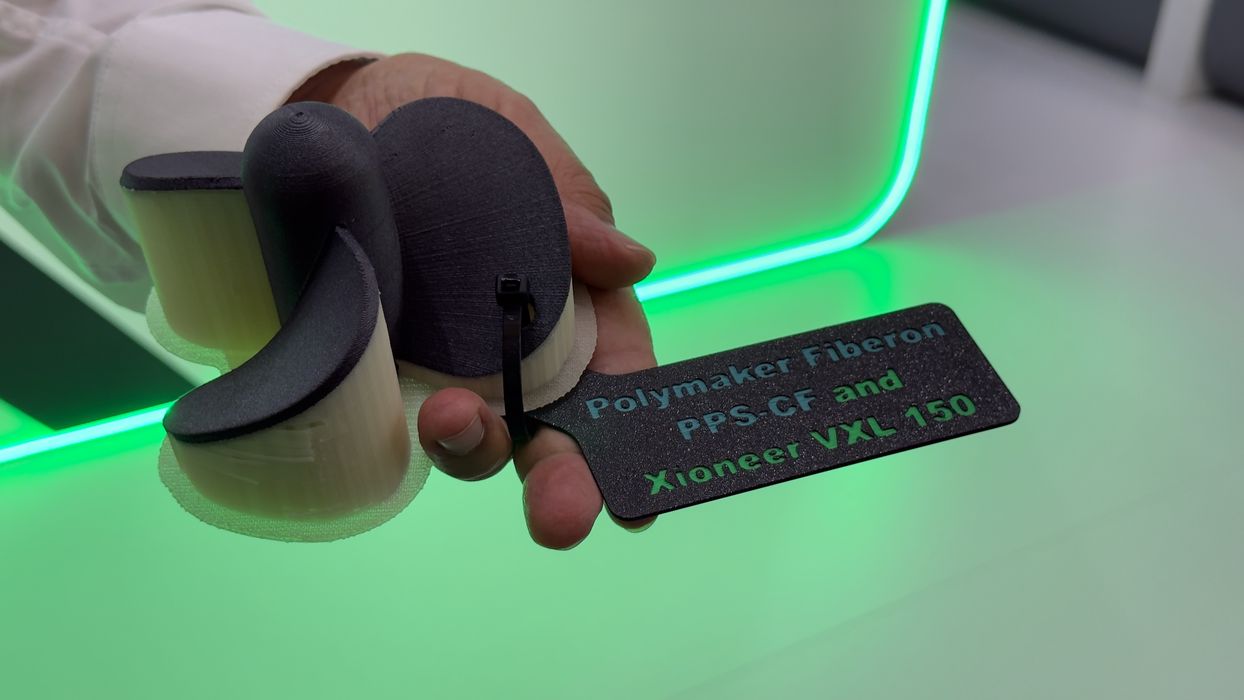
I had a chat with the folks from Xioneer about their increasingly powerful post-processing solutions.
The German company focuses on post-processing and made their fame through their soluble support product, VXL.
Soluble support is printed in multi-extruder systems to enable easy printing of highly complex geometries. Instead of manually picking off the support structures — and potentially breaking any delicate bits — the support structures simply dissolve away. This doesn’t even require any labor.
That all sounds good, but it’s more complex than you’d think. A common soluble support material is BVOH. This works well in ideal conditions, but conditions are not always ideal. For example, BVOH absorbs moisture incredibly well, making it a requirement to dry it before and sometimes during printing. It also has a relatively low softening temperature, meaning you can’t use it when printing higher-temperature materials.
Enter VXL, which is not hygroscopic. Xioneer has been busy filling out a rather complete set of VXL products that seem to address almost any conceivable 3D print scenario.
At the top, you’ll see their chart, which shows the different versions of VXL. The numbers indicate the glass transition temperature of each filament. This can be matched against the various material types to determine the ideal soluble support material for any given 3D print job. This year, they’ve filled out the range in 20-degree increments.

Here we can see a part 3D printed in Polymaker’s incredibly hard Fiberon PPS-CF material using Xioneer’s new VXL 150 support material.
Is VXL water-soluble? As a side effect of its humidity resistance, you require a solvent to wash off the VXL from models. Xioneer told us they recommend wash soda, as it works well and is safer, but is a bit slower to dissolve. They said not to use sodium hydroxide. While ultrasonic cleaning stations work very well with VXL, they are not required for use.

The company also markets devices to efficiently perform the washing stage, such as the Typhoon 70 shown here wearing an insulating blanket. The unit includes an app to control the stirring motions. What’s interesting is that the Typhoon is smart: when the solution gets thicker due to heavy use, it adjusts the speed automatically and can notify the operator that it’s time to change the solution.
Finally, the company is now branching into 3D print dyeing. They’ve developed the ColorLab, a machine that can precisely measure pigments with a spectrometer to saturate a print. The machine adjusts the dyeing time based on these measurements for consistent color results.
Via Xioneer
